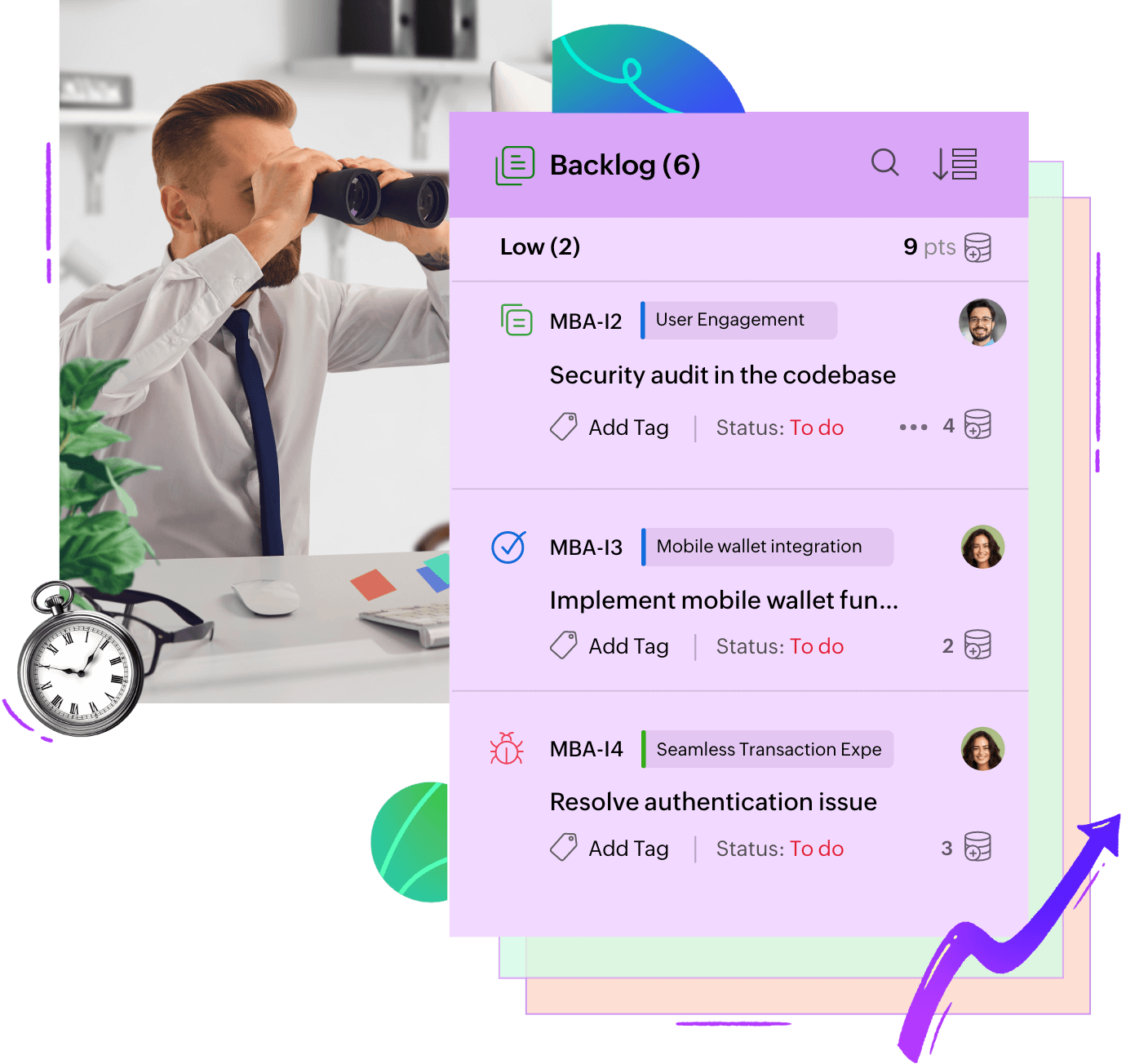- Break down work into user stories, tasks, and sub-tasks.
- Improve collaboration with project stakeholders
- Prioritize backlog items and simplify sprint planning
- Promote incremental and iterative development
Simplify your sprint planning process with backlog management software

Product Backlog Prioritization
Most product backlogs end up becoming a dumping ground for every idea, user story, or bug fix related to your product. Maintain a prioritized list of backlog items by grouping the results based on parameters like item type, priority, or assignee.
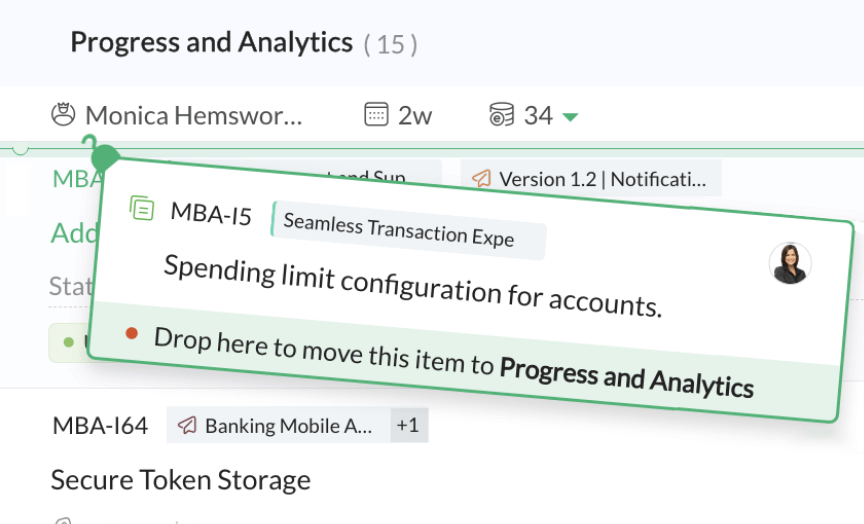
Sprint Planning
Backlog grooming or sprint planning can become tedious when multiple tasks require the same field update or need to be moved to a different project or sprint. In Zoho Sprints, you can easily update fields and move or delete multiple work items in one go.

Quick and Custom Filters
Searching for a high-priority work item in your backlog may feel like finding a needle in the haystack. Narrow down your search using Zoho Sprint's quick filters or your own custom filters. You can also save your searches and access a predefined section of your backlog.
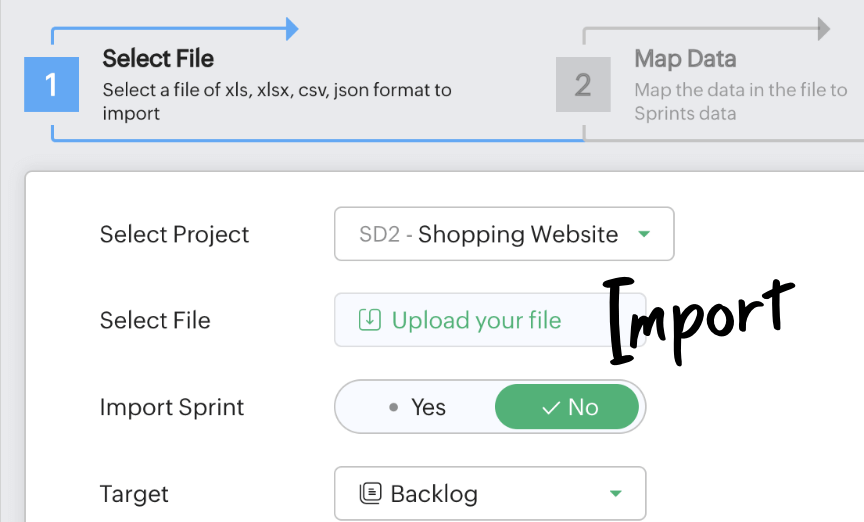
Data Interoperability
Teams can quickly import their backlog items from a different tool. Multiple file formats are supported, and you can easily map columns like item name, owner, and priority with fields in Zoho Sprints. Learn more about importing your data from Jira here.
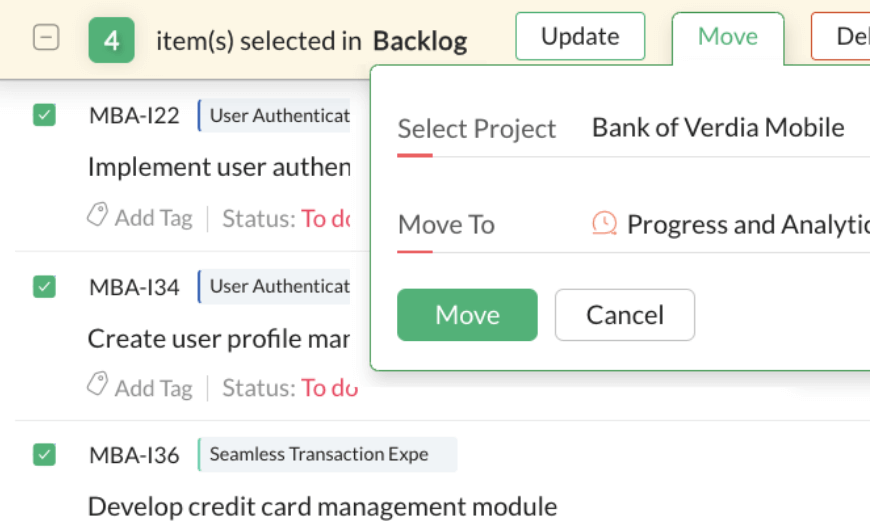
Bulk Updates
Updating multiple tasks can be a time-consuming process. Bulk Update allows you to move, delete and edit selected fields such as assignee and priority for multiple tasks in one go.
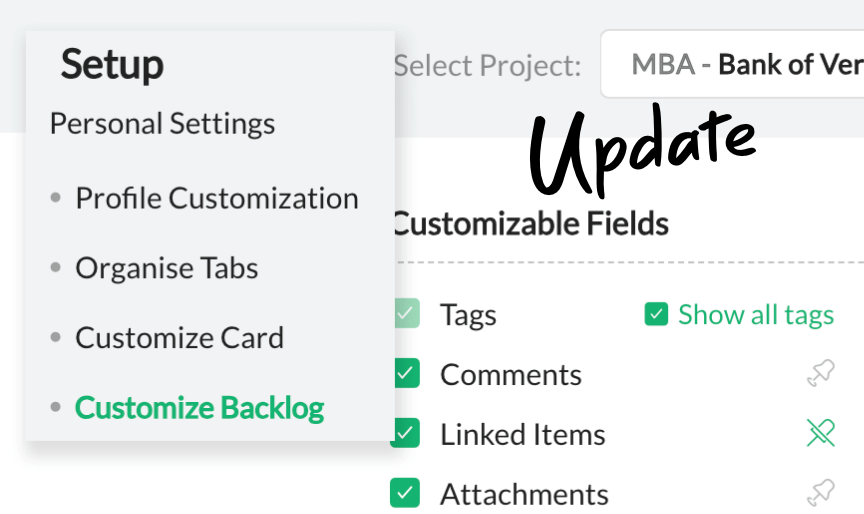
Customizations
Get better visibility of your backlog work-items with the help of custom views. Customize elements on backlog items by managing the field visibility and pinning the preferred fields to the work item.
Backlog Management Tool: A Smarter Way to Manage your Backlogs
Effective backlog management goes beyond just keeping tasks in order. It is centered around empowering teams to make calculated decisions, adapt to changing requirements, and stay aligned to core priorities. With the help of the right backlog management tool, teams can make the most out of their backlog as a strategic asset that continuously drives improvement and better delivery with each sprint.
Zoho Sprints equips teams with a robust array of implementations that help them efficiently manage their product backlogs. It supports dynamic workflows by facilitating seamless collaboration and informed decision-making. Be it remote work or scaling with demand growth, teams can rely on Zoho Sprints to maintain clarity, momentum, and strategic direction throughout their project lifecycle.
Explore other features
Frequently Asked Questions
Effective product backlog management begins with a clear understanding of product goals, so that you can identify and prioritize the items of paramount importance first. This is followed by regular reviews and adjustment, which involves the removal of outdated or less relevant items. It is important to continuously refine the backlog items by clarifying with your entire team and stakeholders. This keeps everything organized and updated depending on the project's current requirements at that time. Visibility, accessibility, and consistent communication are also crucial to ensure that priorities and expectations are always clear without any ambiguity.
Backlog software streamlines project management by acting as a centralized platform for teams to organize and prioritize project tasks with real-time tracking for easier collaboration and increased transparency. It greatly assists teams in efficiently allocating resources, quickly adapting to feedback, and focusing on what's important.
Backlog software is considered the best in making projects management more efficient when it supports capabilities like easy prioritization, clear visibility, and real-time collaboration in a single unified platform. It should be effective at tracking progress and facilitating seamless communication, which ultimately leads to better project outcomes.
- Real-time collaboration: Allows the team to update and communicate on backlog items without hiccups so that everyone is aligned with the details.
- Task prioritization and organization: The tool lets you rank tasks clearly, set dependencies, and create custom issue types or layouts to reflect your workflow needs.
- Access control and permissions: Ability to manage who can view or edit backlog items to protect sensitive information and maintain control.
- Visual backlog management: Board-style layouts with drag-and-drop interfaces make for easy prioritization and visualization of tasks and project progress.
- Reporting and analytics: Dashboards with essential charts like burndown, burnup velocity, cumulative flow, etc. for providing accurate insight into team performance and project status.
- Search and filtering: Being able to find specific backlog items efficiently or a set of similar items, which is crucial for larger projects.
- Integration capabilities: Support for linking with other development or communication tools such as DevOps, IM, etc. to streamline workflows.
Yes, effectively managing task lists is one of the core purposes of backlog software. It lets you create tasks and assign them with crucial details such due dates, priority levels, and dependencies to name a few. Backlog tools like Zoho Sprints with advanced search filters also let you view your tasks organized based on the key details like assignee, status, duration, etc.
Yes, backlog software is built to track multiple projects simultaneously. It segregates each project into an individual workspace with its unique task repository. Teams can work on each project in parallel with clear visibility while mitigating the possibility of mixing up work items across different projects.
